News & Updates
5 Biggest Myths Hurting our Public Lands

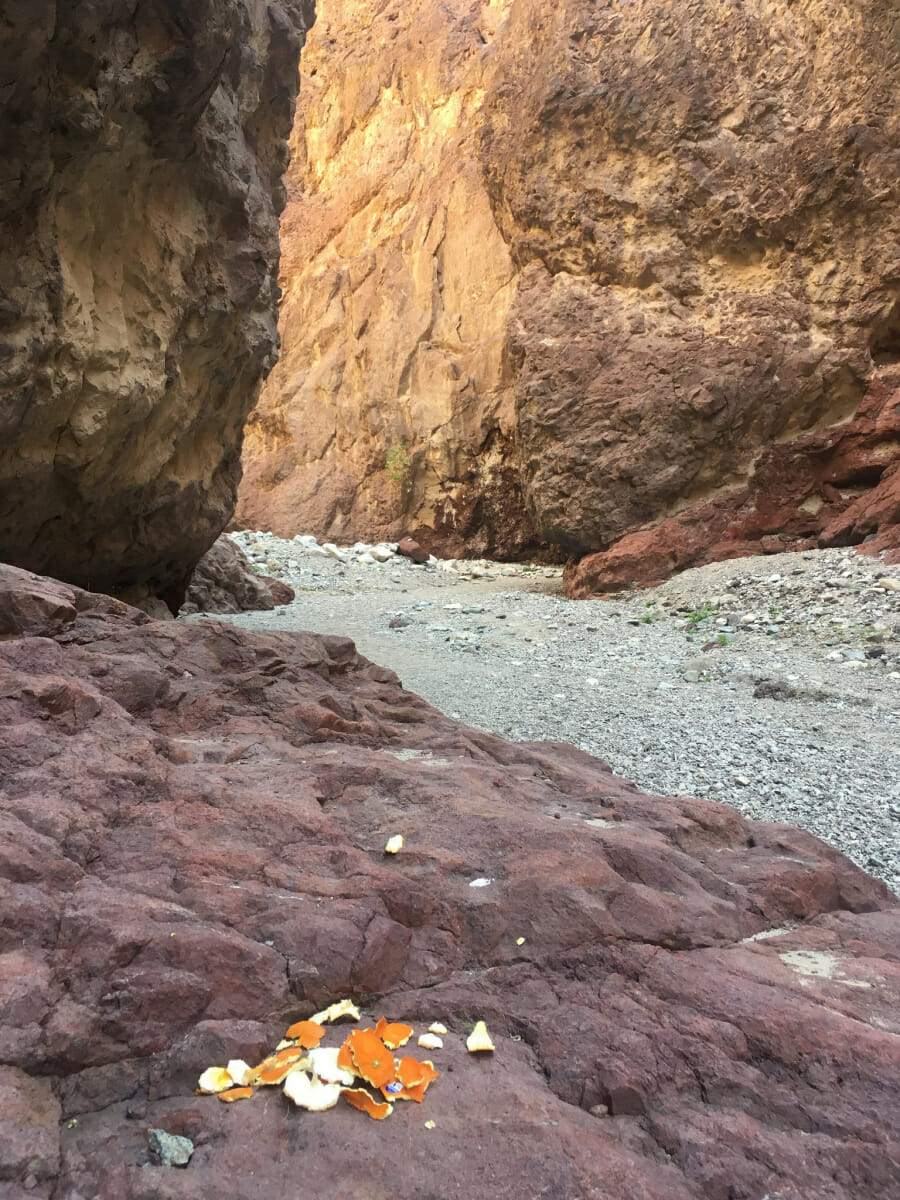
Lake Tahoe, CA: For the past 16 months we've been traveling the Western United States, visiting national and state parks, designated campgrounds, BLM sites, and wilderness areas to teach visitors how to protect our public lands by recreating ethically and responsibly. We’ve camped 250 nights this past year and have seen some incredible places- and some not so incredible places. Places where the wildlife issues are so bad the squirrels will jump on you while you’re eating to get at your food, places littered with toilet paper and smell of human feces, places where there are two trails to the same place, an uphill and downhill trail, because people refuse to yield to other users, or places closed because of a recent fire caused by someone who left their campfire unattended. As we travel and educate we see some common themes, common misconceptions of how to act in the outdoors that are actually hurting the places people like to visit.
1. “Leave fruit peels and crumbs for the wildlife!”
We often see orange and banana peels, apple cores, and other food scraps left on sides of trails and at campsites. “It’s natural. It’s biodegradable. It’s food for the squirrels and birds.” We find even well-assuming people, who consider themselves environmentalists and conservationists, are unaware of the problems that throwing out food scraps and fruit peels pose to their favorite trails and campgrounds.
Leaving food behind attracts wildlife closer to humans. When these items are thrown out of car windows it attracts wildlife to roadways where they can become roadkill. When they are thrown on the sides of trails or at a campground, animals learn this is a place where they get food. Maybe an apple isn’t the worst thing for them, but once they start hanging out around humans someone will eventually hand the animal something worse like trail mix or chips. Animals can get aggressive while seeking our food and can be eradicated or put to death because of the dangers of diseases and close human contact.
We’ve seen this issue first hand. On a hike to Angels Landing in Zion National Park a squirrel climbed my backpack, boldly up my shoulder, and to the top of my head! When it couldn’t get food from me, it followed another visitor who unloaded the crumbs of their trailbar onto their leg to get a photo with the critter. In a campground in Dinosaur National Monument a chipmunk jumped into our car searching for food, we spent the next five minutes opening doors until it finally hopped out. This behavior can be avoided. Keep wildlife wild by packing out all trash: food scraps like orange and banana peels, apple cores, and sunflower or pumpkin seeds included.
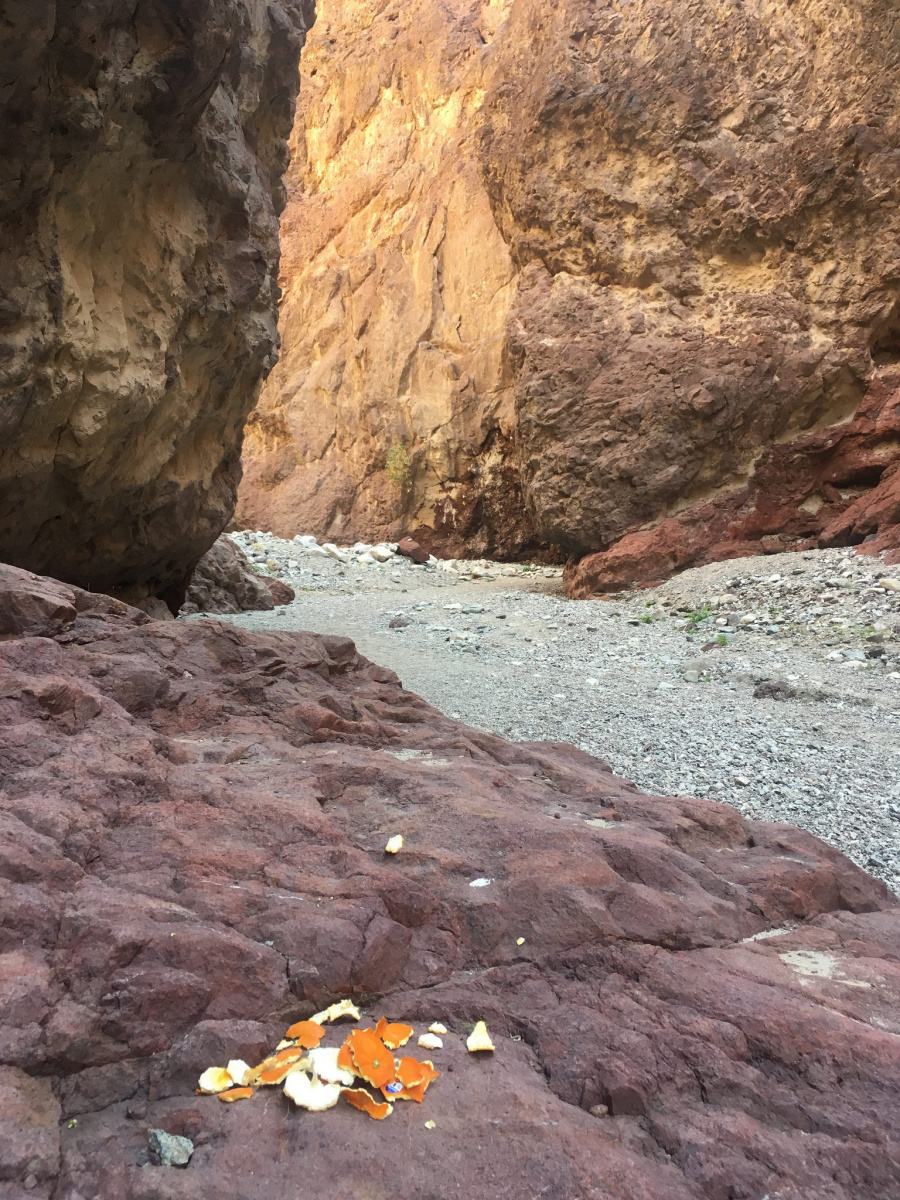
Orange peels left out for wildlife can be harmful to their health and attracts wildlife closer to humans.

Wildlife that come close to humans are often eradicated by land managers because of disease concerns.
2. “If wildlife can poop in the woods, so can my dog!”
We’ve all seen them on hikes or walks in suburban areas. Little bright bags perfectly tied up and left on the side of the trail. Leave No Trace treats dog waste the same as human waste. It has harmful pathogens made up from the processed dog food, medications, and vitamins we feed our pets. These pathogens can make other dogs sick and add harmful additional nutrients like nitrogen and phosphorus to the environment. If it’s too close to water these nutrients can cause algae blooms and pollute water sources by introducing E.Coli and giardia. Dog waste can take a long time to decompose, and in a plastic bag, which can take 20-30 years to break down, will last even longer. We often get questions about the difference between dog waste and wildlife waste, “Why can deer and bear poop in the woods and my dog can’t?”. Wildlife are eating plants from the area and restoring those same nutrients back into the environment. This cycle is well demonstrated in Rocky Mountain National Park where bear poop returned seeds into an area after eating huckleberries. To avoid polluting water sources, pack out dog waste or dig a cathole for your dog!
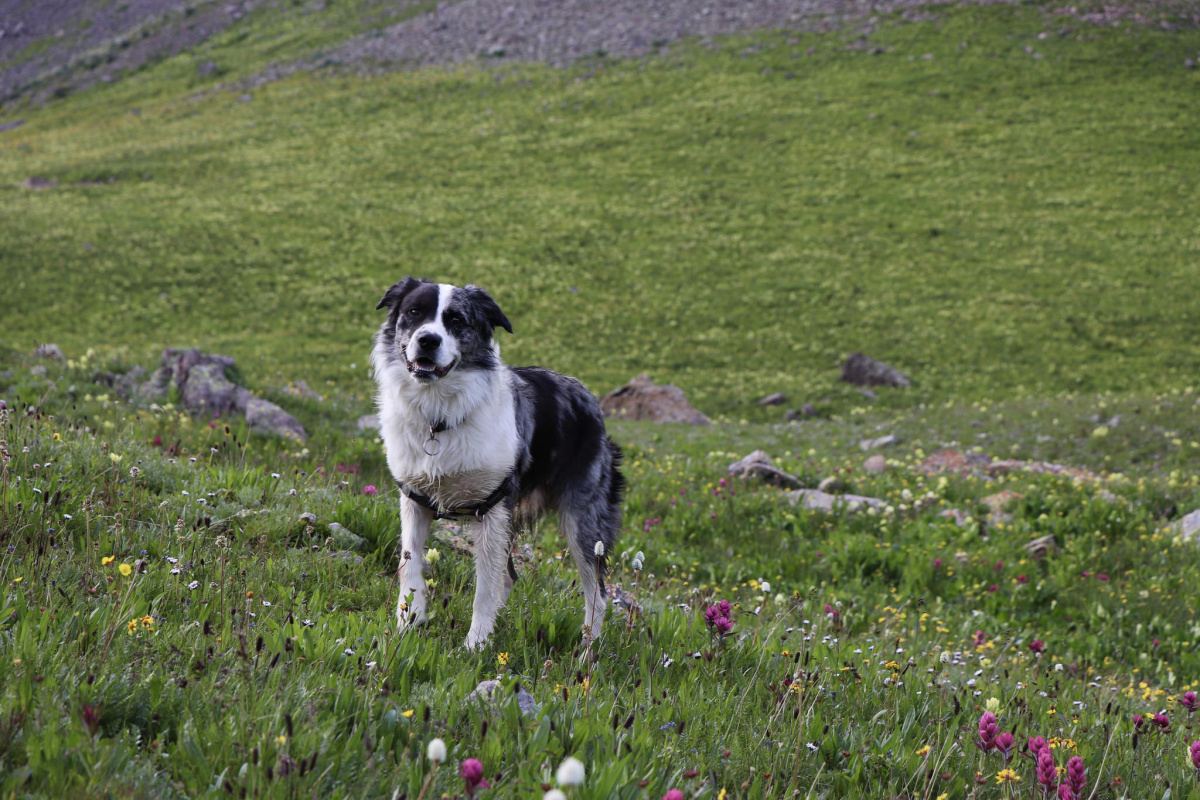
This friendly dog needs you to pick up after it!
3. “I can just poop right here on the ground, right?”
Let’s talk about poop. We’re finding many issues associated with human waste on public lands. We believe the main issue is that it is not normal in our culture to talk about poop. When people go backpacking or hiking for the first time and nature calls, they may feel embarrassed to ask what to do. So here it is: there are three ways to poop in the woods: find a bathroom facility ,dig a cathole, or pack it out.
Digging a Cathole: You always want your cathole to be 6-8” deep, because this is where the microbial activity is in the soil that is going to break down your poop the fastest. If you get deeper than 6-8 inches, you get farther from microbial activity and closer to the water table. Any shallower and you risk that in the next two years, erosion, weathering, or wildlife will uncover the waste.
Even in a cathole the pathogens in your poop can take two years to decompose. This is why you want to be a good distance away from water so your waste doesn’t end up in water sources. Leave No Trace recommends walking 200 feet, or 70 big steps, away from any water sources before digging your cathole. This is incredibly important because our public lands are having to implement closures or permit systems, and require packing out waste when people don’t poop correctly in the outdoors. In Conundrum Hot Springs, near Aspen, CO, there are almost 6,000 overnight visitors during the summer period. A ranger we talked to buried 90 piles of human waste in one month! The hot springs there are gorgeous but human waste risks contaminating the springs. This area is recommending people pack out their human waste to cut down on some of the impact.
No one likes seeing restrictions on public lands, but human waste is a health hazard to both humans and ecosystems. Learning to poop in the outdoors and telling your friends how to poop in the outdoors will help keep our public lands open.
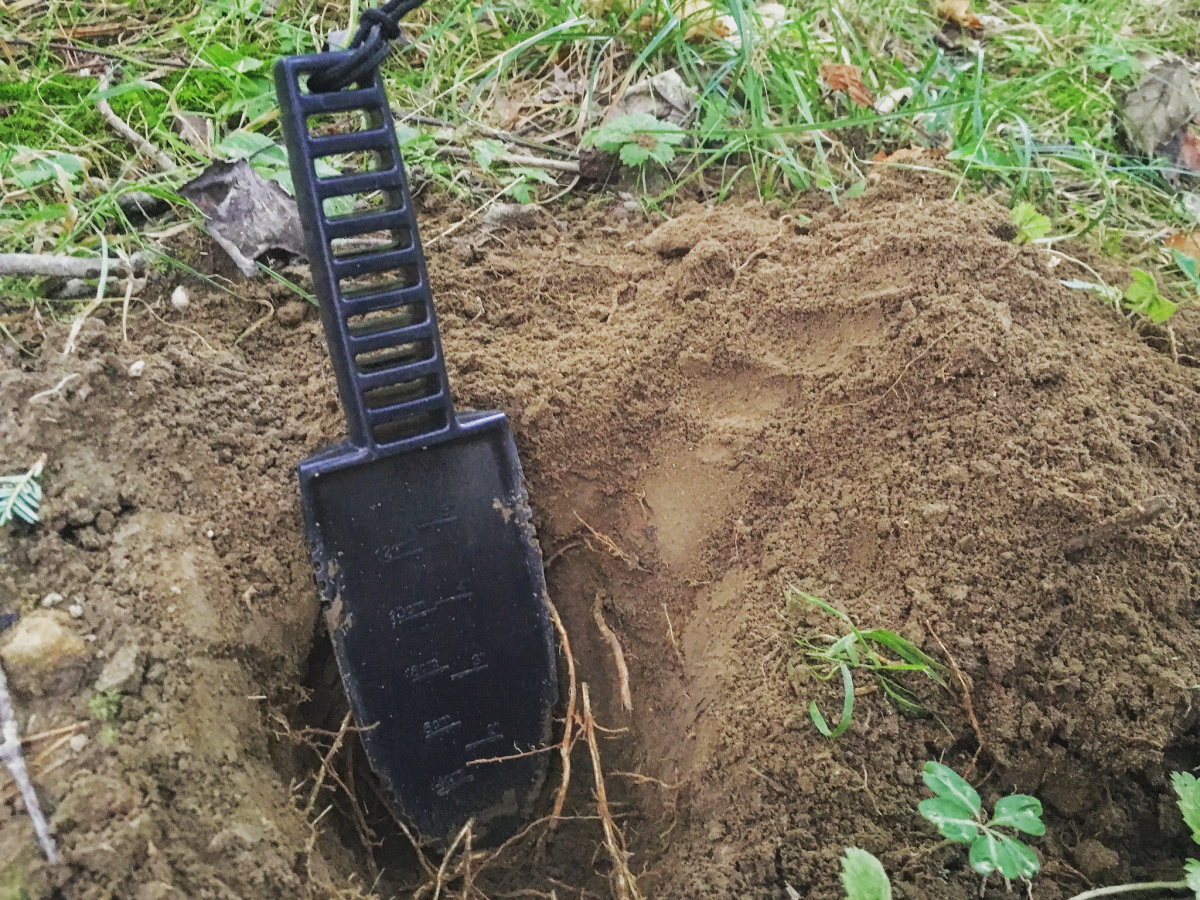
Dig a cathole 70 big steps away from water to prevent human waste from entering our water sources.
4. “Take your dishes to the river to wash!”
On a recent drive through Spearfish Canyon in South Dakota, we spotted two unassuming campers doing their dishes in the river. Soap coated the vegetation and whirled downstream as they dunked a dirty pan in the clear waters. Maybe it sounds romantic, maybe we imagine ourselves as the cowboys of the West with our trusted steed roaming hills and mountain passages. Soaking our bandanas and washing in nature’s bathtub. I regret to inform that those days are over. This was probably fine when there were less people getting outdoors. But there are 12 billion visits to our public lands each year. Since soap, yes, even biodegradable soaps, can last in a river system for several years and can alter pH balances affecting macroinvertebrates, the building blocks of life, we have to be really careful with our water sources. Leave No Trace recommends doing dishes and bathing 200ft, or 70 big steps away, from water to help protect the few clean drinking sources we have. Strain out any food scraps and then broadcast your dishwater over a large area of plants. The thinking here is that one plant may not survive all the dishwater and residue but dishwater spread out among many plants won't do as much harm.
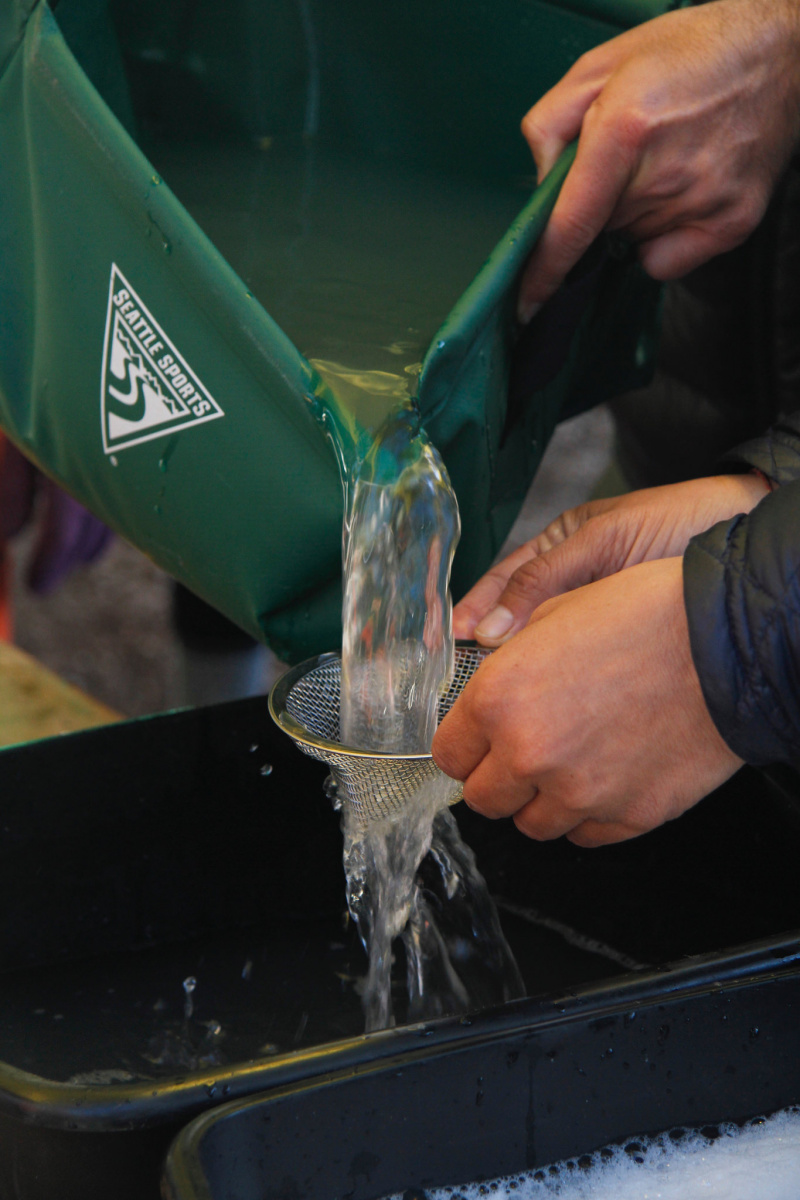
Do dishes away from water sources and strain out food scraps to pack out and avoid attracting wildlife and insects to campsites and trails.
5. “Oh, it’ll die out!”
Last year, 84% of all wildfires were caused by humans. That’s a lot of preventable damage. The biggest cause of this is people not extinguishing their camp fires completely. We find that people will often leave their campfires to burn out on their own. Weather can change quickly and wind can scatter embers and turn your once dying fire into a bonfire. To help prevent this always follow mandated fire restrictions. Second, use water to extinguish your fire until it’s cold to the touch. Many people use sand to put out their fires, but sand only extinguishes the flame without getting rid of the heat. It sometimes only takes a small breeze to whip a bed of hot coals and ashes back into a full on flame. I’ve experienced this first hand on a camping trip to Joshua Tree National Park with some girlfriends. Before going to bed, I put out our fire with sand, I thought I used a sufficient amount. It was a windy night although no fire restrictions were in place. When I woke up in the middle of the night our campfire was going strong, I quickly extinguished the flames with water and made a soupy mix to make sure it didn’t start again. I touched the coals to make sure they were cold. This only took a minute or two but helped me sleep at night knowing I wasn’t going to burn down the National Park and put visitors and firefighters at risk. Putting your fire completely out, cold to the touch, is the only way to prevent fire damage we’re seeing from visitors to our public lands.
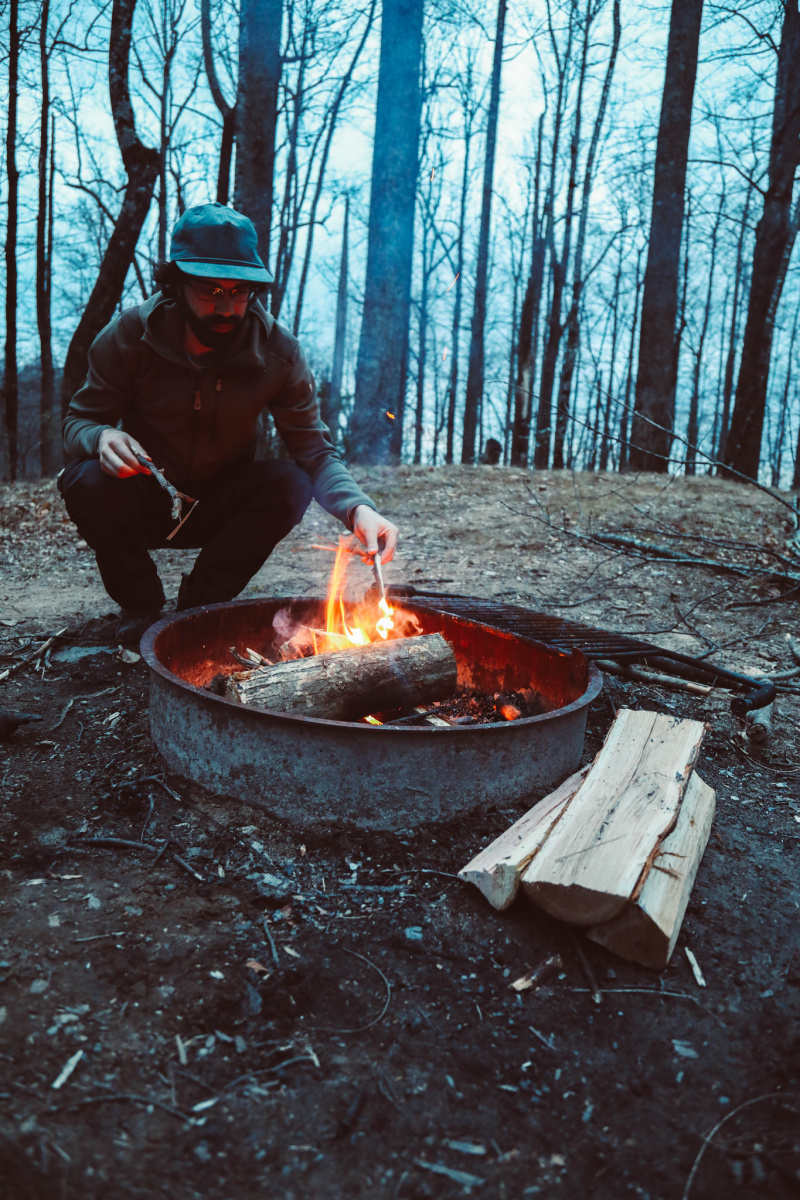
Make sure your fire is cold to the touch before heading to bed or leaving it unattended, this helps prevent human-caused wildfires in the places you love to visit.
These impacts are cumulative, can you imagine 12 billion people on our public lands all leaving food scraps or pooping too close to water, leaving their fires or not picking up dog poop? Outdoor ethics is about what you choose to do when no one is watching. What is the place you’re visiting worth to you, worth to others, to our future generation? I’m here to tell you that your actions matter, there is a reaction to how you behave in the outdoors although it may seem like you’re alone. Be the kind of person that protects the places you love, one action at a time.
Enjoy Your World. Leave No Trace.
Leave No Trace's Donielle Stevens and Aaron Hussmann are part of the 2017 Subaru/Leave No Trace Traveling Trainer Program that provides free, mobile education to communities across the country. Proud partners of this program include Subaru of America, REI, Eagles Nest Outfitters, Deuter, Thule, Klean Kanteen, and Smartwool.
Let’s protect and enjoy our natural world together
Get the latest in Leave No Trace eNews in your inbox so you can stay informed and involved.
